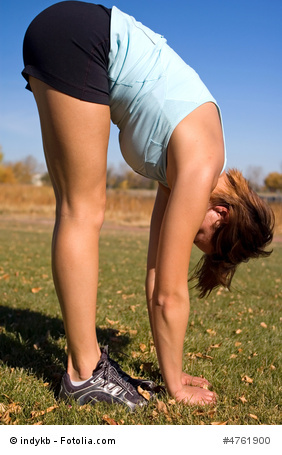The technique I am about to share with all of you is perhaps the MOST EFFECTIVE STRETCHING TECHNIQUE for increasing your flexibility.
This technique utilizes a method called PNF, or Proprioceptive Neuromuscular Facilitation.
You’re probably thinking, ‘WHAT DID HE SAY!?’ Let me repeat.
Proprioceptive Neuromuscular Facilitation
- Proprioceptive has to do with sensation and the position of the body.
- Neuromuscular has to do with nerves and muscles.
- Facilitation has to do with making something easier.
Essentially, you are giving the body proprioceptive cues to relax muscles and make movements easier. Using PNF, you may be doing this very shortly.

So now you are probably saying to yourself, “Okay, so what is so special about PNF?”
There are a couple of sense receptors related to proprioception in the body that should be mentioned. To truly understand PNF, you should understand the science as well.
What Muscle Spindles and Golgi Tendon Organs Do
Muscle Spindles: These are receptors in the body that sense changes in muscle length. If you stretch too fast for example, a stretch reflex is triggered where a signal sent by these spindles causes the muscle to contract.
Golgi Tendon Organs: These receptors sense increases in muscular tension and trigger a relaxation reflex in the muscle.
Through avoiding the stretch reflex from the Muscle Spindles and taking advantage of the relaxation reflex from the Golgi Tendon Organs, you can get a GREAT STRETCH, which is what PNF seeks to do.
Doing PNF will have you stretching muscles like never before and maybe one day be as flexible as this woman below!

*PNF a lot of times requires a partner to execute properly, so find a friend to go to the gym with! The partner should also be somewhat familiar with PNF to get the desired effect.
There are three PNF stretching techniques you can use, with the last one being the most effective. I will be using the hamstrings as the example muscle.
The Three PNF Techniques You Can Use To Stretch
Hold-Relax Technique
Picture yourself laying back on a mat, your left leg is straight on the mat. Your partner is by your legs and is keeping your right leg straight and is lifting it up into a stretch. After giving you a 10 second stretch to warm up, you are then instructed to contract your leg towards him while he resists your force. You and your partner are matching each others force with the intention of no movement occurring. His hand position is one hand is keeping your knee straight, the other is providing resistance at the ankle. You HOLD the contraction for roughly 10 seconds (The contraction triggers the Golgi Tendon Organs to cause a relaxation reflex). You then relax and allow your partner to continue to stretch you for 30 seconds. This should allow you stretch further than you previously did.
Contract-Relax Technique
This is very similar to the Hold-Relax Technique. The only difference is rather than meeting your partner’s force during contraction as was done in Hold-Relax, you now will try to overcome their force. Your partner now is trying to prevent you from moving with your greater force. (If you are a lot bigger/stronger than your partner, you should use Hold-Relax).
Hold-Relax with Agonist Contraction
Picture the Hold-Relax technique above, with the warm up and contraction. After the contraction now, you MOVE YOUR LEG TOWARDS YOURSELF. In other words, flex your hip and move your leg in the direction your partner is stretching you. This technique not only stimulates the Golgi Tendon Organs during the initial contraction, but also on the second contraction when you use your hip flexor muscles. Through those contracting, the Golgi Tendon Organ relaxation reflex is activating again, causing the hamstrings to relax for a second time as your partner stretches you.
These are 3 very useful PNF stretches/stretching techniques that are of great use if you have a workout buddy and are quickly looking to improve your flexibility. Any additional questions or comments, let me know!
References:
1. Adler, S. S. et al. PNF in Practice. 3rd. edition. Springer Medizin Verlag. 2008.
